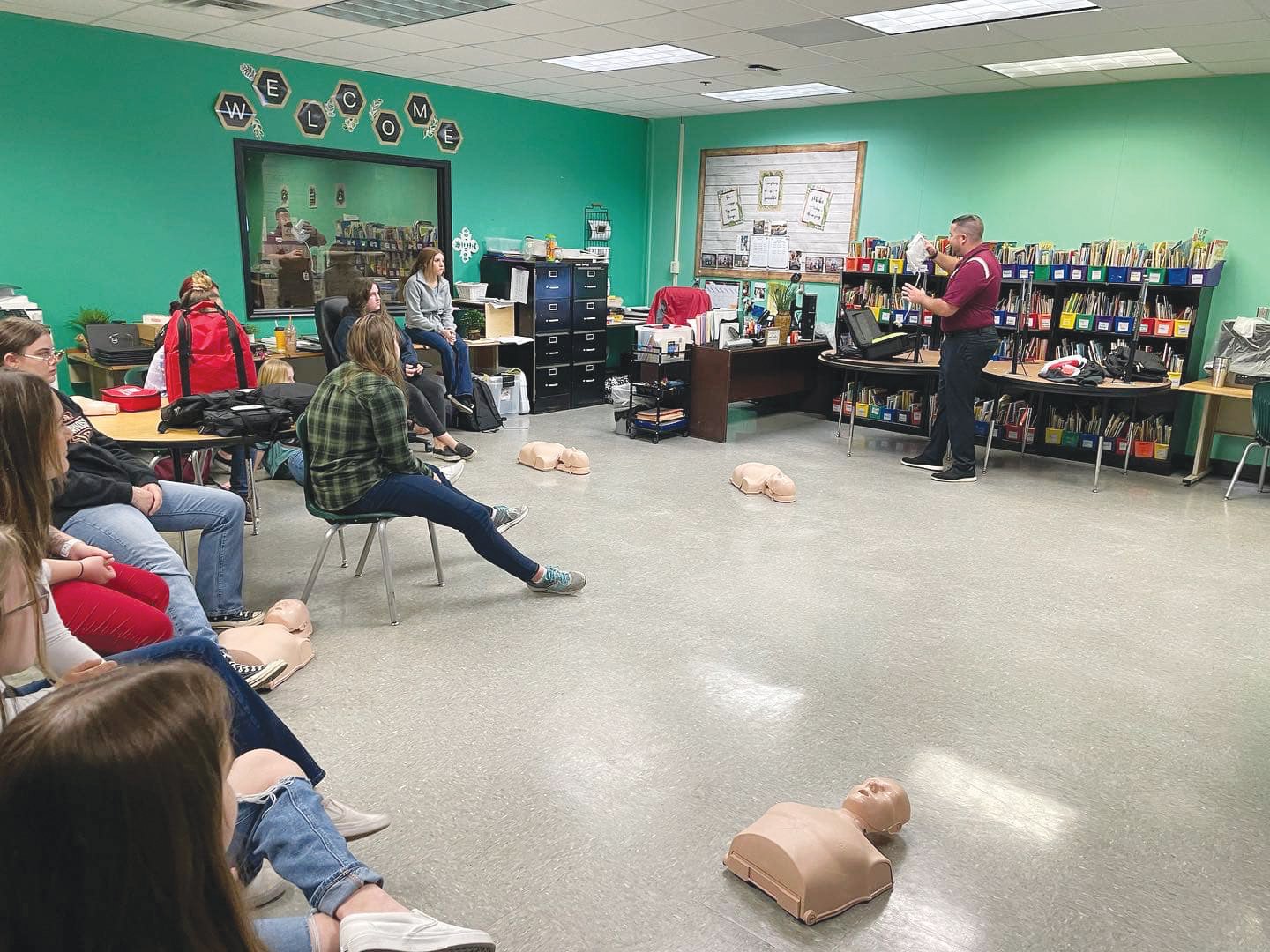Why CPR?
Cardiovascular disease No. 1 killer among women
CLAY COUNTY – Imagine this: you are walking across the Winn-Dixie parking lot when a middle-aged woman collapses at the crosswalk. Her body goes limp; she is motionless; her skin turns blue from …
This item is available in full to subscribers.
Attention subscribers
To continue reading, you will need to either log in to your subscriber account, or purchase a new subscription.
If you are a current print subscriber, you can set up a free website account and connect your subscription to it by clicking here.
If you are a digital subscriber with an active, online-only subscription then you already have an account here. Just reset your password if you've not yet logged in to your account on this new site.
Otherwise, click here to view your options for subscribing.
Please log in to continueDon't have an ID?Print subscribersIf you're a print subscriber, but do not yet have an online account, click here to create one. Non-subscribersClick here to see your options for subscribing. Single day passYou also have the option of purchasing 24 hours of access, for $1.00. Click here to purchase a single day pass. |
Why CPR?
Cardiovascular disease No. 1 killer among women
CLAY COUNTY – Imagine this: you are walking across the Winn-Dixie parking lot when a middle-aged woman collapses at the crosswalk. Her body goes limp; she is motionless; her skin turns blue from the lack of blood pumping through her heart.
Cars stop. Pedestrians run inside, shouting for help. Someone calls 911 while everyone else stands there, not moving, stunned into silence. By the time EMS arrives, the woman's heart has stopped for nearly four minutes.
According to the American Heart Association, cardiovascular disease is the No. 1 killer of women, more than all forms of cancer combined. And yet, it's a common misconception that men are at greater risk for heart problems than women.
"We need people to understand that women die at the same rates from cardiac arrest as men do. We have the same stressors. We have the same underlying heart conditions," said Eunice Mathis, a Florida Training CPR Instructor in Jacksonville. "But the public doesn't know this because whenever you're watching TV and someone sustains a heart attack, it's always a male clutching his chest."
"On TV, the main symptom of cardiac arrest is sudden, crushing chest pain, but women are more likely than men to have non-chest pain-related symptoms," she added.
Symptoms can be vague and many women brush them off because they're not widely known as signs of a Cardiac Arrest. Furthermore, many people believe that women are more likely to overdramatize incidents.
"It's not until they are on the ground, unconscious, that they realize it's not anxiety. And then they're like, oh no, what do I do now?" Mathis said.
Many hesitate to perform CPR despite being protected by the Good Samaritan Act.
According to a study by the American Heart Association, 45% of men received bystander CPR compared with only 39% of women. Men had 23% higher odds of survival than women.
"The assessments are the same for men and women," Mathis said. "Tap and shout, check the carotid pulse, but the bystander's response is different. If you are a woman who sustains a cardiac arrest in front of a male, the male is less likely to provide CPR because they don't want to touch your chest."
Rescuers often fear accusations of inappropriate touching, sexual assault or injuring the victim. Furthermore, male bystanders are also less likely to use an AED while waiting for emergency medical services, severely decreasing the female victim's odds of survival.
"Don't be worried about her being exposed. It's better to be exposed than dead," Tucker said. "If we delay exposing the chest, which means removing the shirt and bra, then we're going to delay placing the AED pads. If the AED is delayed, it's harder to get an adult victim of sudden cardiac arrest back into a normal rhythm," she said.
However, to see these changes on a global scale, we must first start in the classroom. "For example, CPR has been something that has been taught for about forty years, and we just now have CPR mannequins, as of 2022, that have women-like breasts," Tucker said. Mathis added that it is equally imperative for images and manikins used in CPR training to reflect a diversity of racial groups.
These educational tools must represent the population receiving CPR in real life because how we learn CPR plays into our perception of who is affected by sudden cardiac arrest and how to treat them. Changing people's perspectives of Cardiac Arrest victims starts by acknowledging that everybody- no matter what you look like- is susceptible to cardiac arrest and deserves to be saved.











